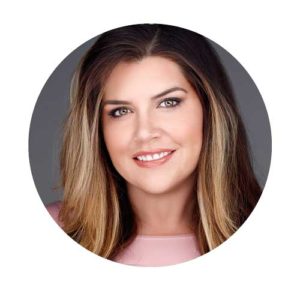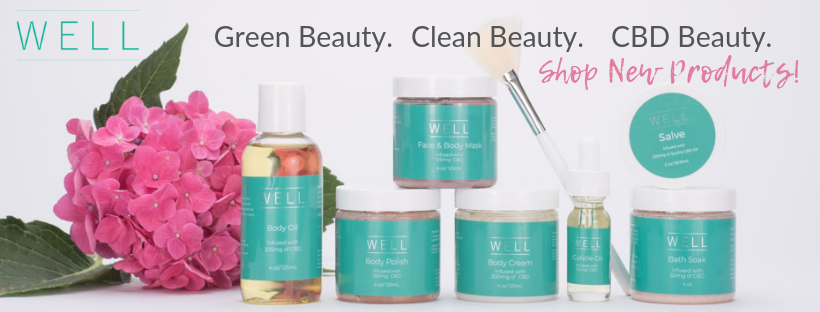By Ella Cressman, LE
If you work in the Spa industry and you haven’t heard of CBD skincare, then CONGRATULATIONS! You must be so busy you haven’t had time to see these 3 little letters are taking over! Though it may seem the use of topical cannabis is a new trend, it is not. In fact, history shows ancient cultures have utilized the cannabis plant in topical concoctions as early as 8,000 years ago.
Before you ask anyone to “puff, puff, pass” that CBD Serum or massage cream, let’s begin with understanding the relationship between the cannabis plant, our body systems and the treatment room.
CBD, THC and Hemp
Cannabis is both hemp and marijuana. There are several ways hemp and marijuana are different, but as far as the government is concerned, the defining factor between the two is 0.3% Tetrahydrocannabinol (THC). Any plant with more would be considered marijuana, anything less can be classified as Hemp. This definition can be found in the Farm Bill of 2014 and gave federal permissions to develop programs centered on the designation “Industrial Hemp”. There began the budding of the modern hemp derived CBD industry. The Farm Bill of 2018 provided well needed clarification that any extract from the Industrial Hemp plant would be removed from the schedule I controlled substances list, and this is why we’ve seen a flood of CBD products to the market in 2019.
%
Considered Hemp
How Much THC Classifies The Product
%
Considered Marajuana
Cannabinoids are chemical compounds that communicate with our body’s Endocannabinoid System (ECS). The ECS was discovered by a group of Israeli scientists while attempting to trace THC to its point of communication within the body. This research lead to the discovery of endocannabinoids (compounds produced by our bodies) which initiate a host of responses, including (but not only):
- mood regulation
- reducing inflammation
- stimulating the immune system
- inducing appetite
- a suckling response between mother and newborn child
The endocannabinoids communicate with the ECS like an, intricate and integrated superhighway of message relay incorporated in the human design. The communication begins with activation of receptor cells named CB1 and CB2 (there is recent evidence of at least a 3rd receptor and we are holding tight to discover more…).
The best summation of its function is that the ECS is called into action by receiving messages from receptor cells with the intent to establish balance, or homeostasis. The receptor cells respond to endocannainoids (produced by our bodies) and phytocannainoids (produced by plants).
It is like a giant switchboard operator, ensuring the right message initiates the appropriate response, with the best reception for a clear and concise conversation. The ECS has been touted “one of the most important physiologic systems involved in establishing and maintaining human health” (Bradley E Alger, PhD).
So What Are Phytocannabinoids?
Both CBD and THC are molecular structures known as phytocannabinoids. Though these two are the most popular and most studied compounds, there are over 100 phytocannabinoids found in the cannabis plant. Named after the cannabis plant, phytocannabinoids can be found in other plants, including cacao (chocolate), black pepper, black mushrooms and echinacea.
What Does That Mean For The Treatment Room?
Phytocannabinoids applied topically work by communicating mainly with CB2 receptors and encourage a variety of actions. One main benefit of CBD is its anti-inflammatory property. Some of the first hemp infused products to the market (after 2014) were targeted at pain relief, followed by infused massage products. Practitioners, clients and home users may have seen a reduction in inflammation and relief from pain as well and increased skin health. Science also revealed CBD provides a regulation in sebocyte differentiation, cell proliferation and melanogenesis. This, in addition to the anti-inflammatory properties, meant CBD infused products would make a great addition to acne facials, anti-aging treatments and pigment regulating products.
CBD Skincare In The Spa
For this, we have seen spa menus move from CBD infused massage, to adding Hemp facials, and even pedicure services (CBD has an anti-microbial and ant-bacterial property). Med spas are using infused products post chemical peel, post laser (even for toenail treatments) and even post injectables. Laser companies are inquiring about infused products to manage and expedite healing and hair salons are adding scalp skin health products to their offerings.
With the broadening of product offerings, stigmas are lifting and revealing capabilities we previously addressed with a “just say no” mindset. At the same time, studies are being conducted on efficacies and it is only a matter of time before we have a greater understanding of minor cannabinoids, like CBG (which is showing promise for acne), CBG, CBV, CBN and how they work within our scope of practice. We are moving beyond the thought process of cannabis being illicit and seeing it as a tool on the journey of health. Witnessing the evolution and this integration makes for a very exciting time in our industry!
Check Out Our CBD Product Recommendations.
 Ella Cressman, LE
Ella Cressman, LE
Ella grew up in the harsh, dry, cold climate of rural Southern Colorado. After receiving a BS in Business Management from Metro State University and working in industrial construction, Ella pursed a new career in esthetics. In 2009 she became an educator and product representative and enjoyed empowering other estheticians and industry professionals to understand skin care from an ingredient standpoint, rather than a product specific view. From there, she became a Certified Organic Formulator in 2016 and received her Organic Formulator Diploma in 2018…Read More.

